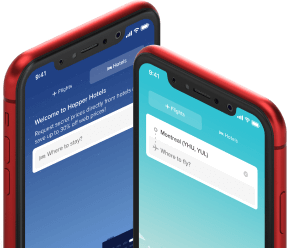Holiday Travel Disruption Outlook
With the busy holiday travel week just days away, the expert team at Hopper and HTS break down what travelers can expect and how to prepare for holiday travel this year.

Hayley Berg - Wed Dec 13 2023
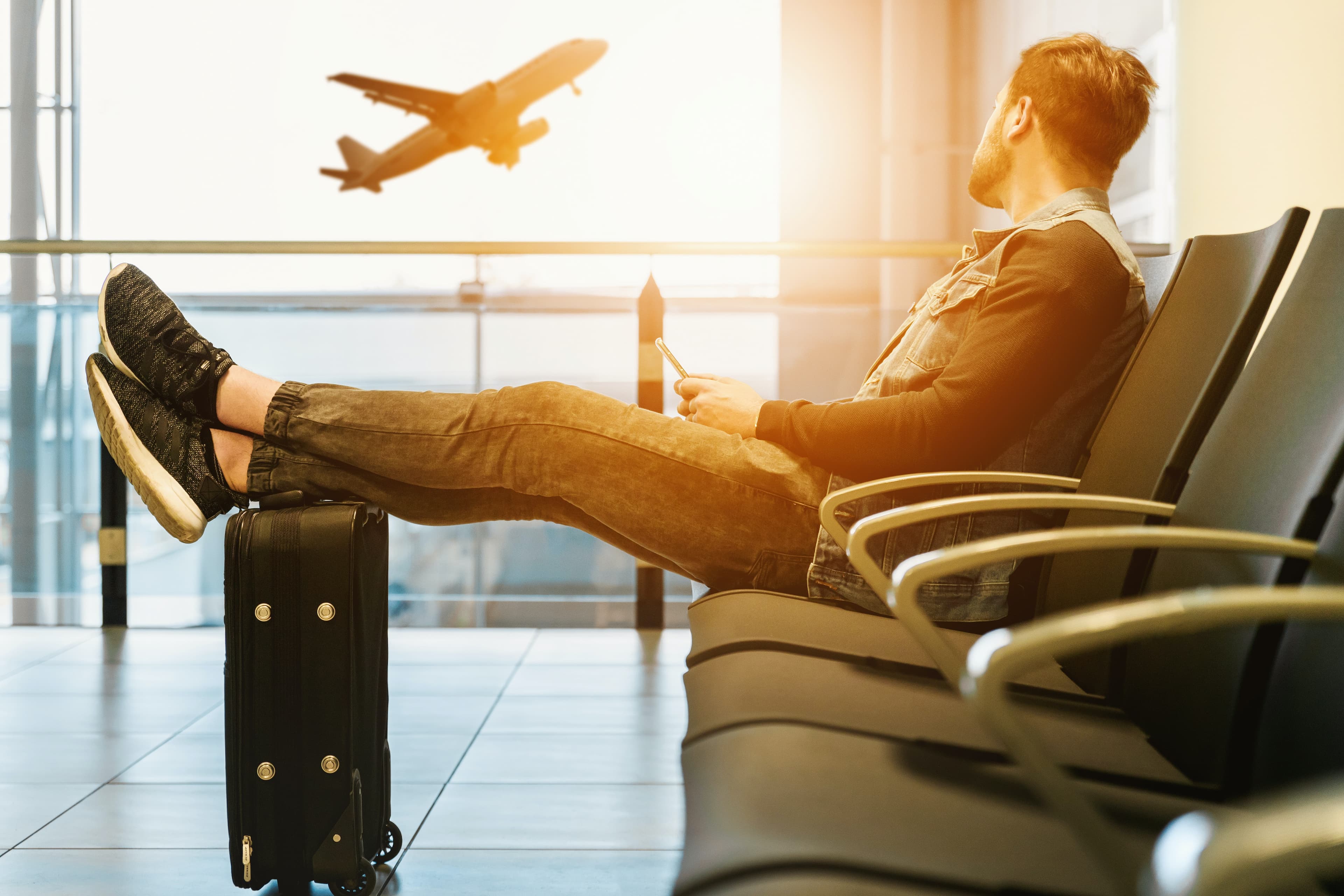
With the holiday season approaching, travelers are gearing up for their holiday getaways to see friends and family, or maybe even a bucket-list vacation. However, many can’t seem to shake the memories of last year’s travel disruptions.
Unexpected winter weather and technical failures at some major airlines resulted in major impacts for airlines and airports who were still rebuilding network reliability following two pandemic years. Needless to say, last year’s holiday trips were rocky for thousands of travelers. More than 31,000 flights were canceled in the last 2 weeks of December last year, and more than 122,000 flights delayed, leaving travelers stranded right before the holidays. This marked a 7x increase in cancellations compared to the same two weeks in 2019, and a 25% increase in delays. In total, 8% of flights were canceled before departure and over 29% were delayed.

2023 Holiday Disruption Outlook
The good news for travelers this year is that airlines have invested heavily in improving network reliability in the last 12 months. This October saw the lowest cancellation rate among US departures since 2019, as well as the lowest delay rate in 2023 so far. In October, about 15% of flights were delayed on departure, down from 25% during July. Cancellation rates dropped below 0.5% in October, down significantly from the over 5% cancellation rate we saw as recently as January of this year.
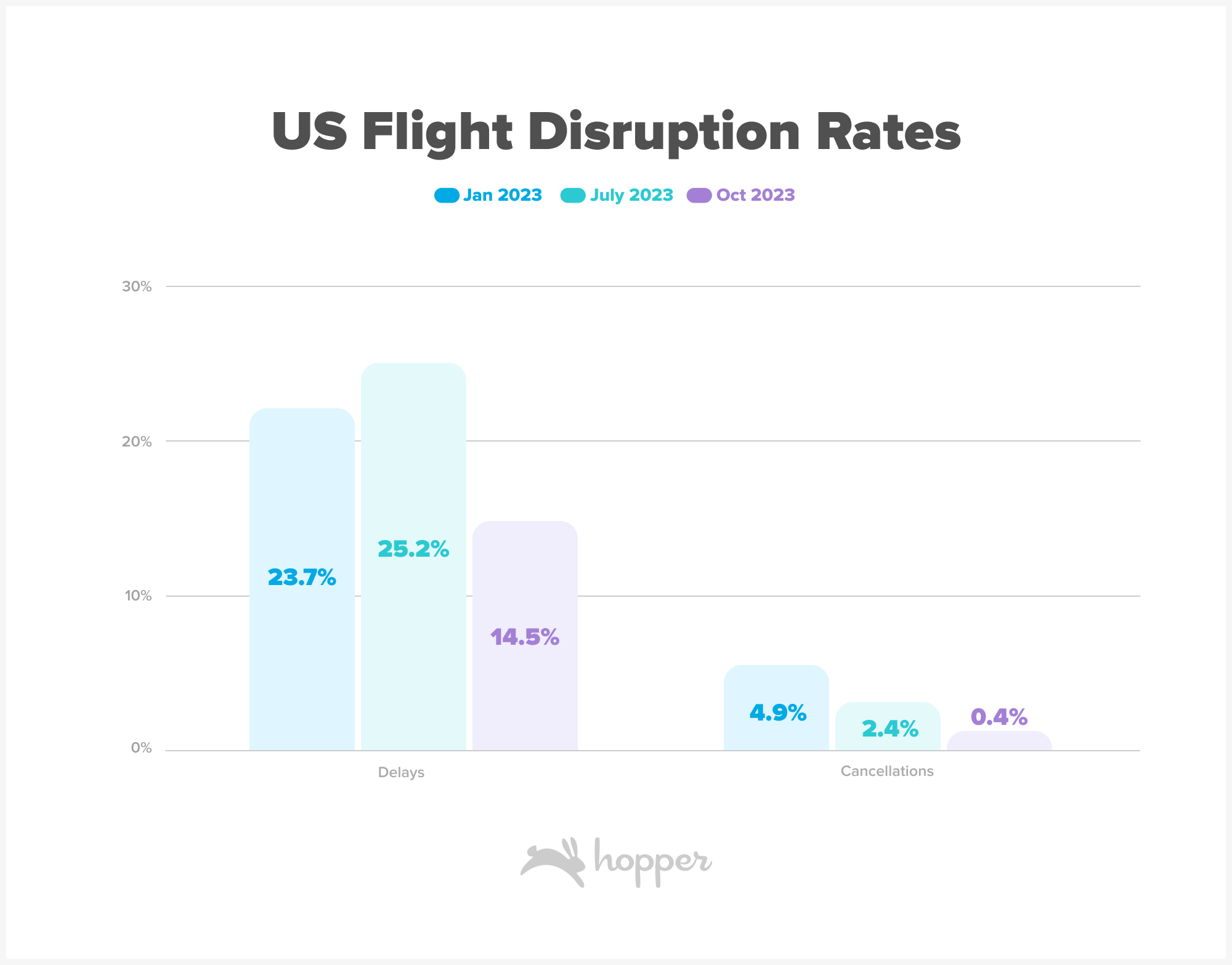
Even with improved disruption rates headed into the holiday season, travelers should plan ahead for potential disruptions. Extreme weather and technical failures can have outsized impacts during these busy travel periods. For the busy holiday season especially, it's a smart idea to add trip protection to your travel plans. Some travel providers, like Hopper, offer Flight Disruption Assistance which allows you to rebook a new flight immediately, regardless of carrier, if you’re delayed, canceled by the airline or you miss a connection. This is a foolproof way to ensure you get to your destination as quickly as possible, if your trip gets disrupted!
Christmas Travel Outlook
24.5 million seats will depart from US airports from December 21st through December 27th as Americans head home or onto vacations for the Christmas holiday. This will represent a 11% increase from capacity scheduled for Christmas at this time last year. Thursday and Friday before the holiday weekend will be the busiest days for departures, with more than 3.7 million seats scheduled to depart from US airports. Airports will remain busy throughout the week following Christmas, as some holiday travelers head home from Christmas trips and others take off on New Year’s trips.
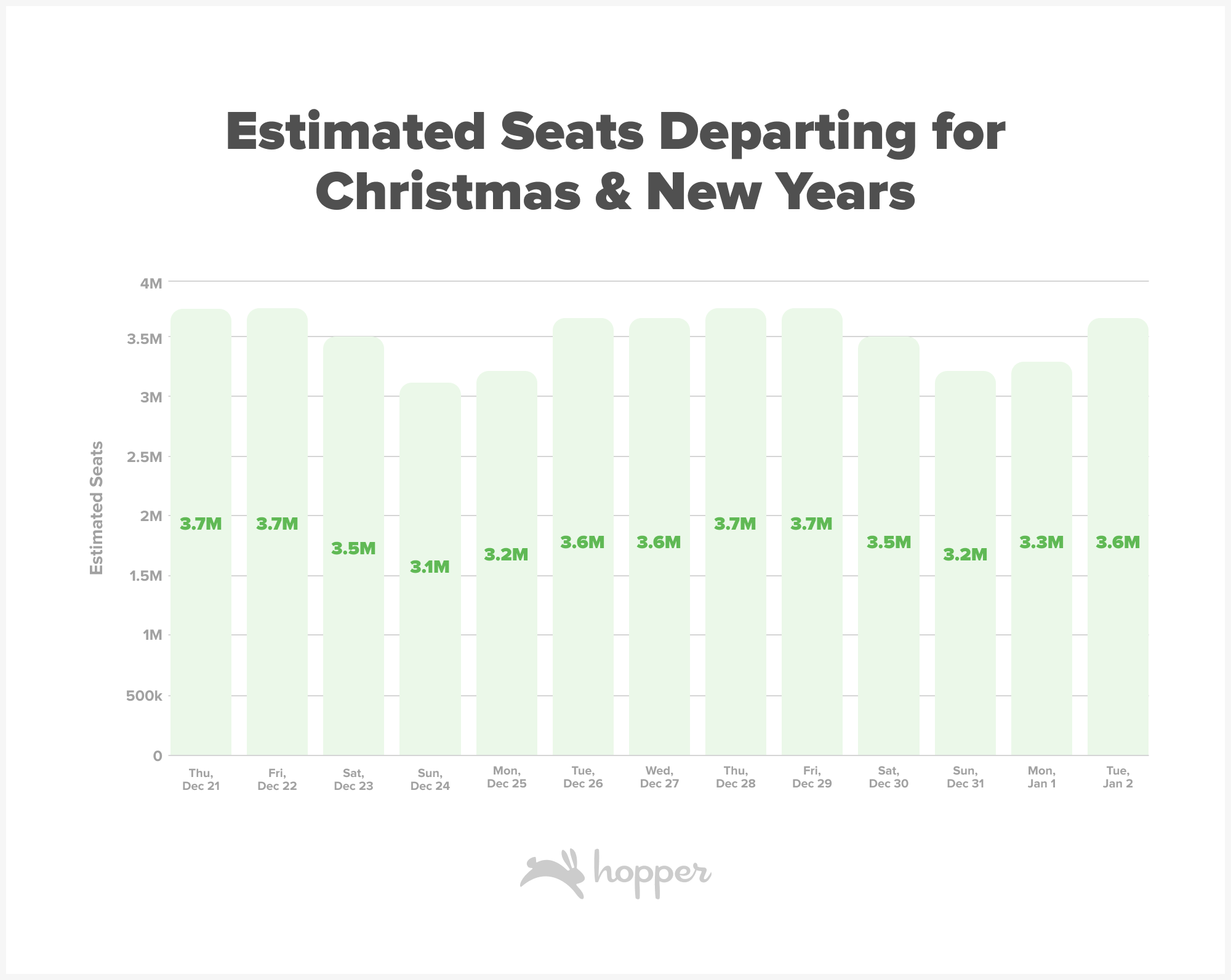
Travelers should expect longer lines at most airports during the busy holiday travel season, but should take extra care if departing from one of these busiest airports for the holiday season. Remember to arrive early, download your airline’s app to stay up to date on your trip and to pack your patience.
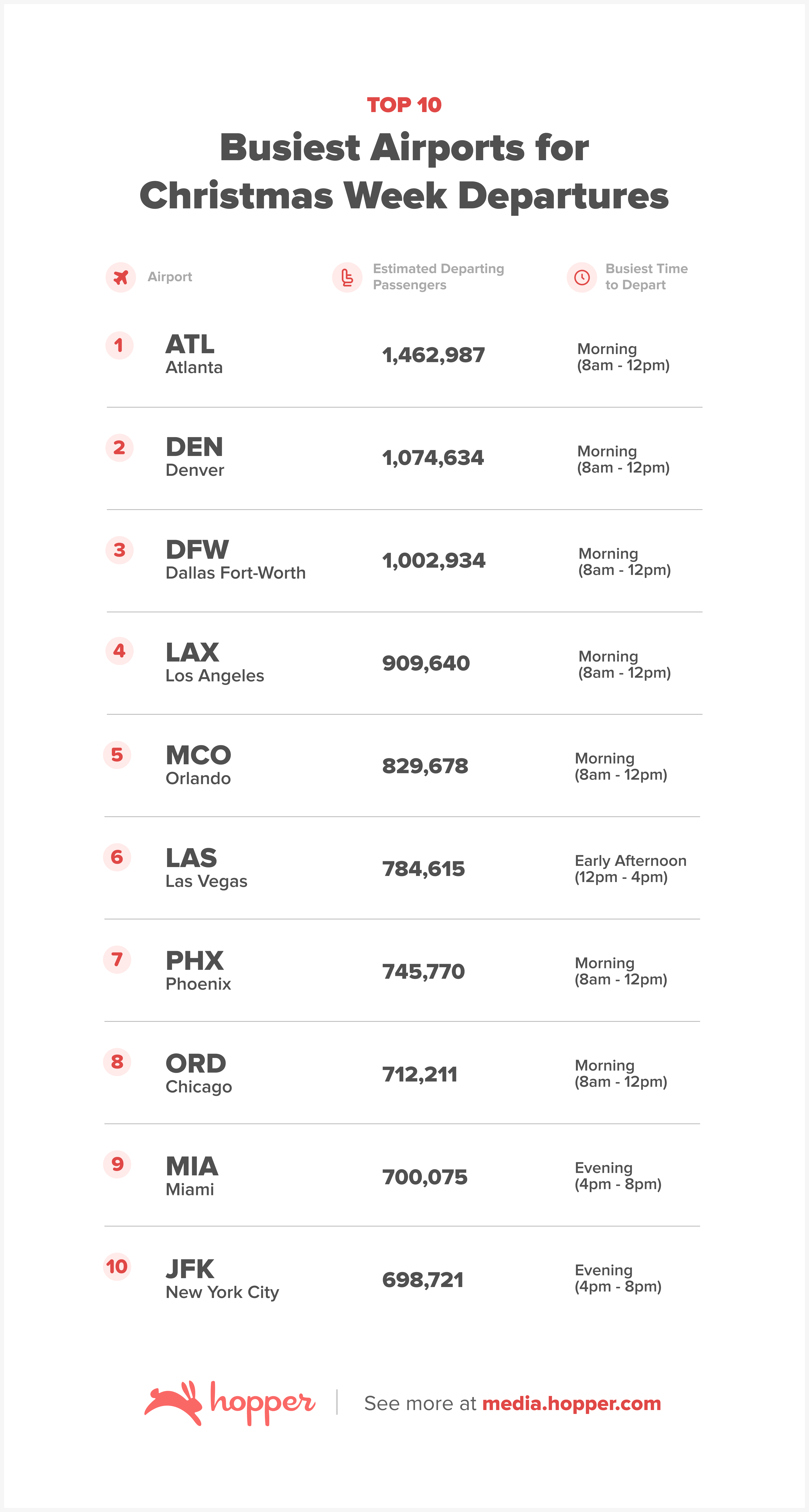
Estimated departing seats on US origin scheduled flights from December 21st through December 27th.
Worst Airports for Winter Travel
The team at Hopper looked at both historical and current disruption rates from US airports to bring you the ultimate ranking of the worst airports for winter and holiday travel. The worst 3? Denver, Orlando and Las Vegas topped the list for worst airports for winter travel, with around 1 in 4 flights disrupted on departure in the last 3 months. This is in line with last year’s data – disruption rates among these airports were well above 30%, with 6% of departing flights canceled at each airport.
Two New York area airports, EWR and JFK, also make the ranking for worst airports to fly out of this winter. New York airspace has been challenged this year by a shortage of Air Traffic Controllers, which resulted in the FAA limiting flights allowed to depart from the region. Airlines have already cut departures from all three major airports in the area, but unreliable staffing remains a continued headwind for capacity and reliability from the New York Area.
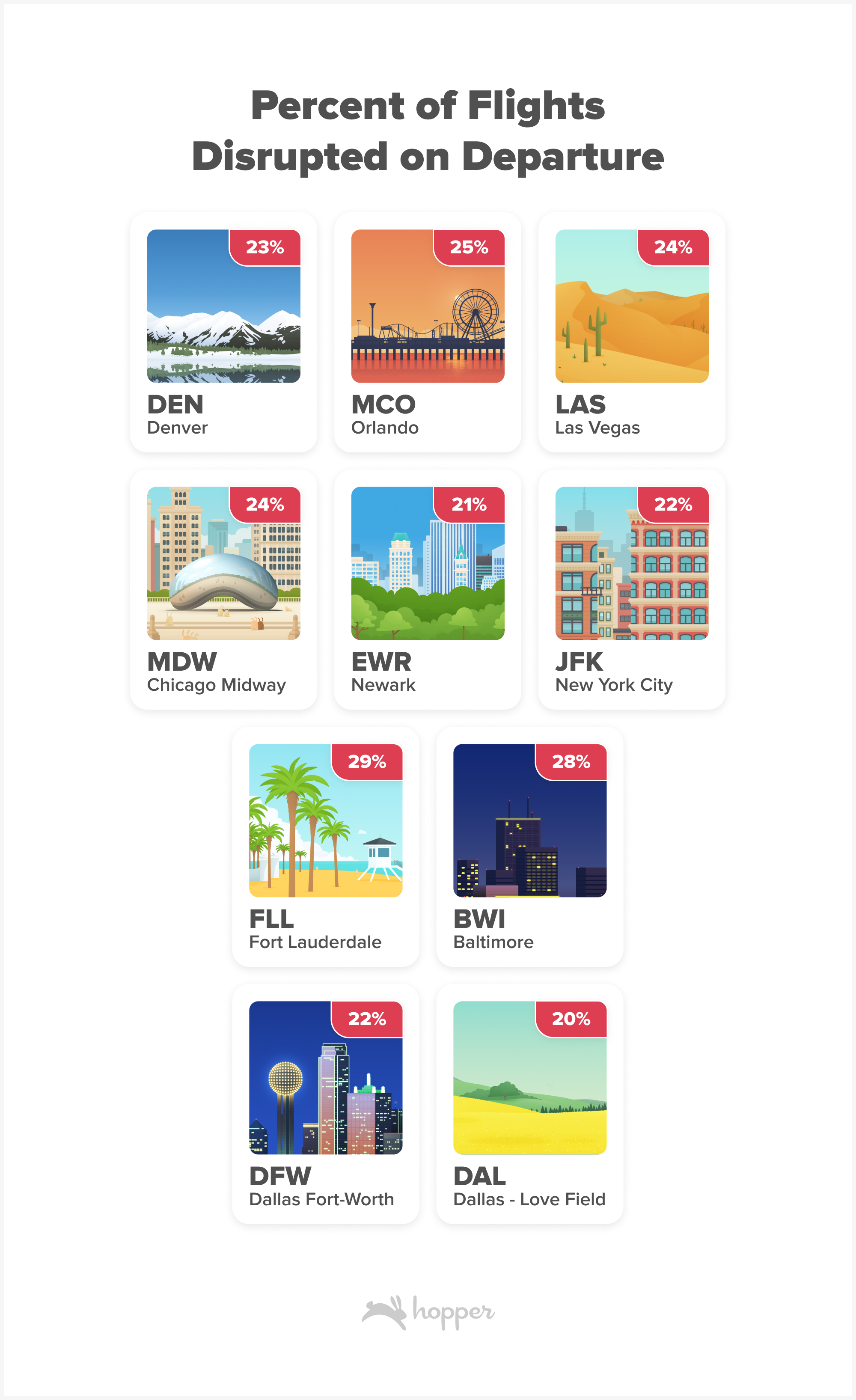
How to combat disruption this holiday season?
When you’re planning
Add Trip Protection: For the busy holiday season especially, it's a smart idea to add trip protection to your travel plans. Some travel providers, like Hopper, offer Flight Disruption Assistance which allows you to rebook a new flight immediately, regardless of carrier, if you’re delayed, canceled by the airline or you miss a connection. This is a foolproof way to ensure you get to your destination as quickly as possible, if your trip gets disrupted!
Book with flexibility: With recent disruptions at the airport, travelers may want to consider adding extra flexibility to their upcoming travel plans in case they want to make last minute changes. Travelers should take advantage of plans like Cancel for Any Reason or Change for Any Reason available through some airlines and Hopper. With these plans, you can instantly cancel or change your itinerary without incurring any additional fees.
Take the first flight of the day: In general, flights departing after 9am are 2X more likely to be delayed than departures scheduled between 5-8am. To avoid travel disruption, fly as early in the morning as possible.
Build in a buffer day: Don’t leave it to chance! Particularly for big events or major trips, it's always better to be safe by baking in an extra day to get to your destination. This way you’ll have some wiggle room, should any delays or disruptions interfere with your travel plans.
Day Of Trip
Sign up for alerts & check flight status before you go to the airport: You’ll want to know about delays and cancellations as early as possible. On most U.S. carriers, passengers can sign up for text, email, and/or in-app notifications about any changes to their itinerary including delay and cancellations.
Know what options you have available: Know what other flights are headed to your destination the same day as your trip in case you’re disrupted and need to get on another flight. Be sure to check airline policies, many carriers will waive change fees if there is a weather advisory or give compensation/travel credit if your flight is canceled within a few hours of departure.
What to do if you’re stranded
Multitask - Get in line to speak with an airline representative at the same time you call the customer support center: During a major disruption there can be hundreds of other travelers trying to get support from airline representatives at one time. Get in line to speak with an agent in your terminal at the same time that you get on the phone to call the support center. Oftentimes an agent can reach you in the phone queue faster than an agent at the airport!
Skip the airport hotel: Airport hotels are often expensive given their convenience, and are likely to sell out during busy travel periods or when disruptions like bad weather hit a region. If you need to find a place to stay in a pinch, look beyond the airport for lower prices and more availability. Check the Hopper app for last minute deals on hotel stays in your area for the most savings.
Consider alternate airports: If you’re flying out of a major city or region with a few airport options, check departing flights from regional airports. In New York for example, you can check JFK, LGA and EWR, but also consider airports close to the area like Westchester or Islip.
Consider driving: When disruptions impact many flights at a single airport or across the US it can sometimes be challenging for airlines to rebook customers within a reasonable amount of time. This could mean you’re stranded for hours or days longer than intended. Depending on your destination, consider renting a car and driving the distance to your destination, or to an airport which does have a flight available for you to rebook.
Get the Hopper app to find the best deals.
You could save up to 40% on your next flight!
